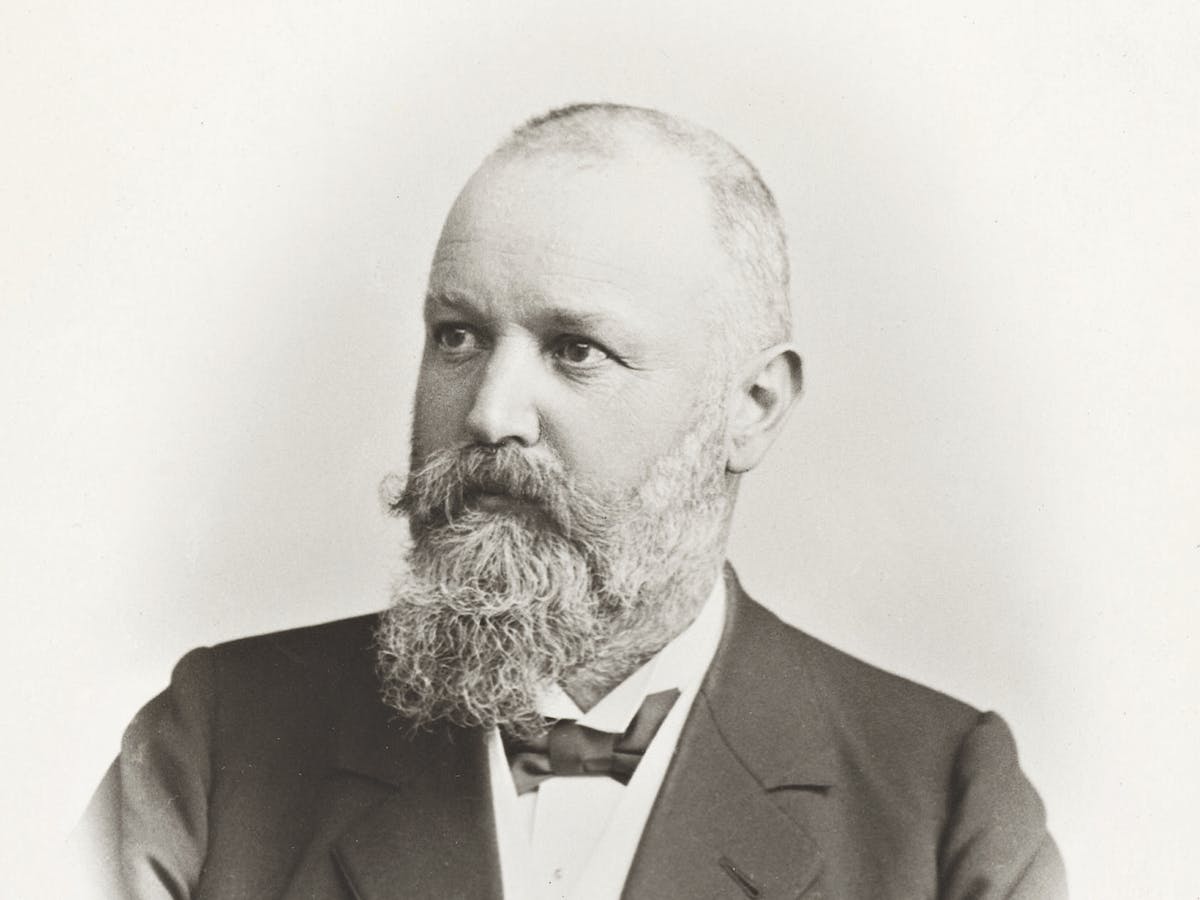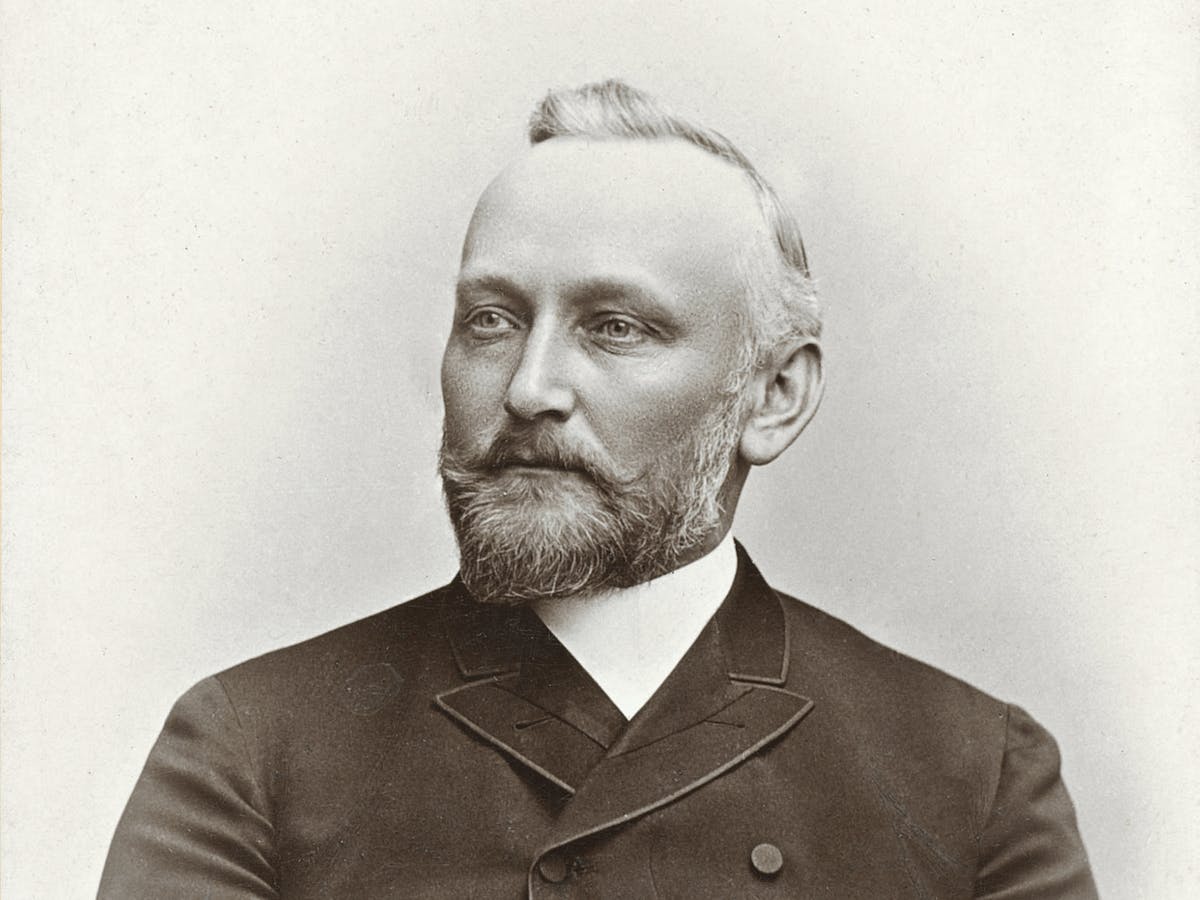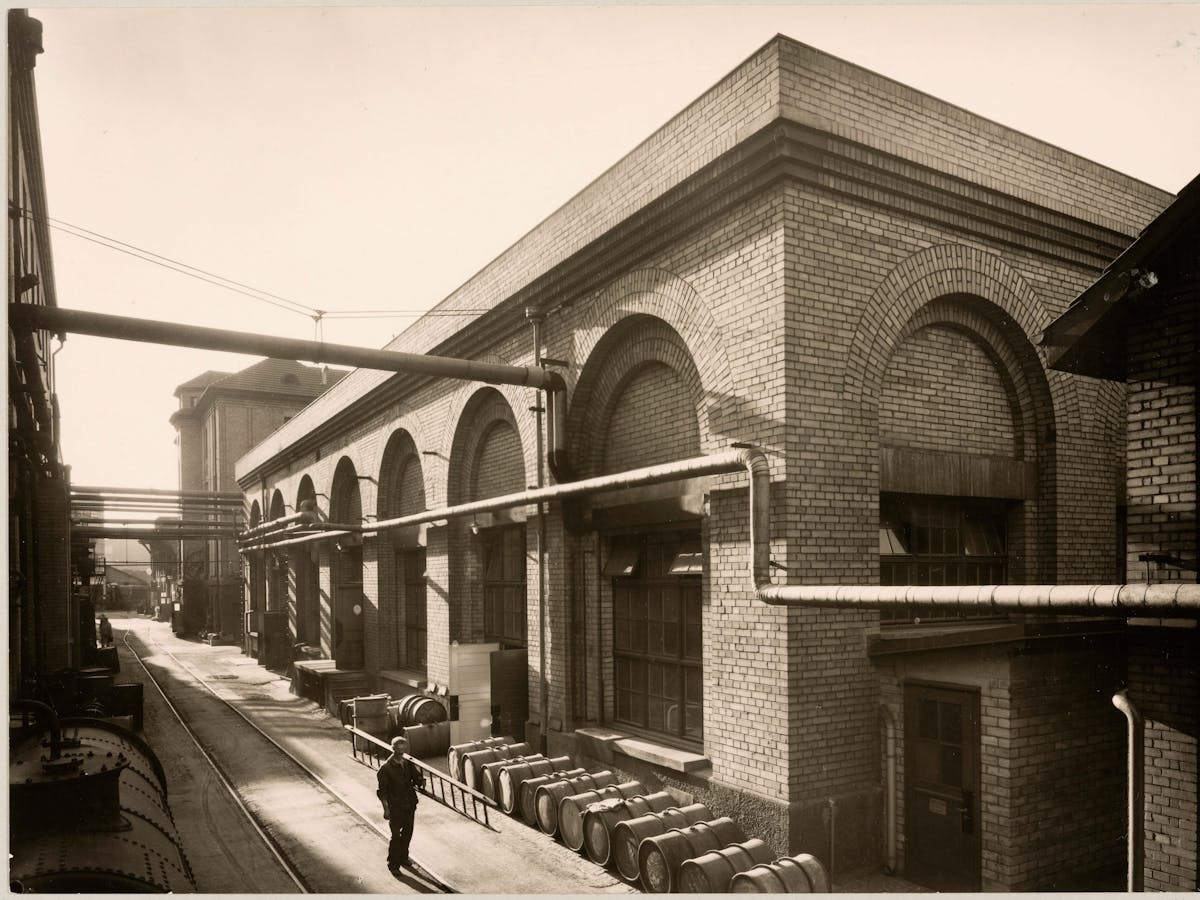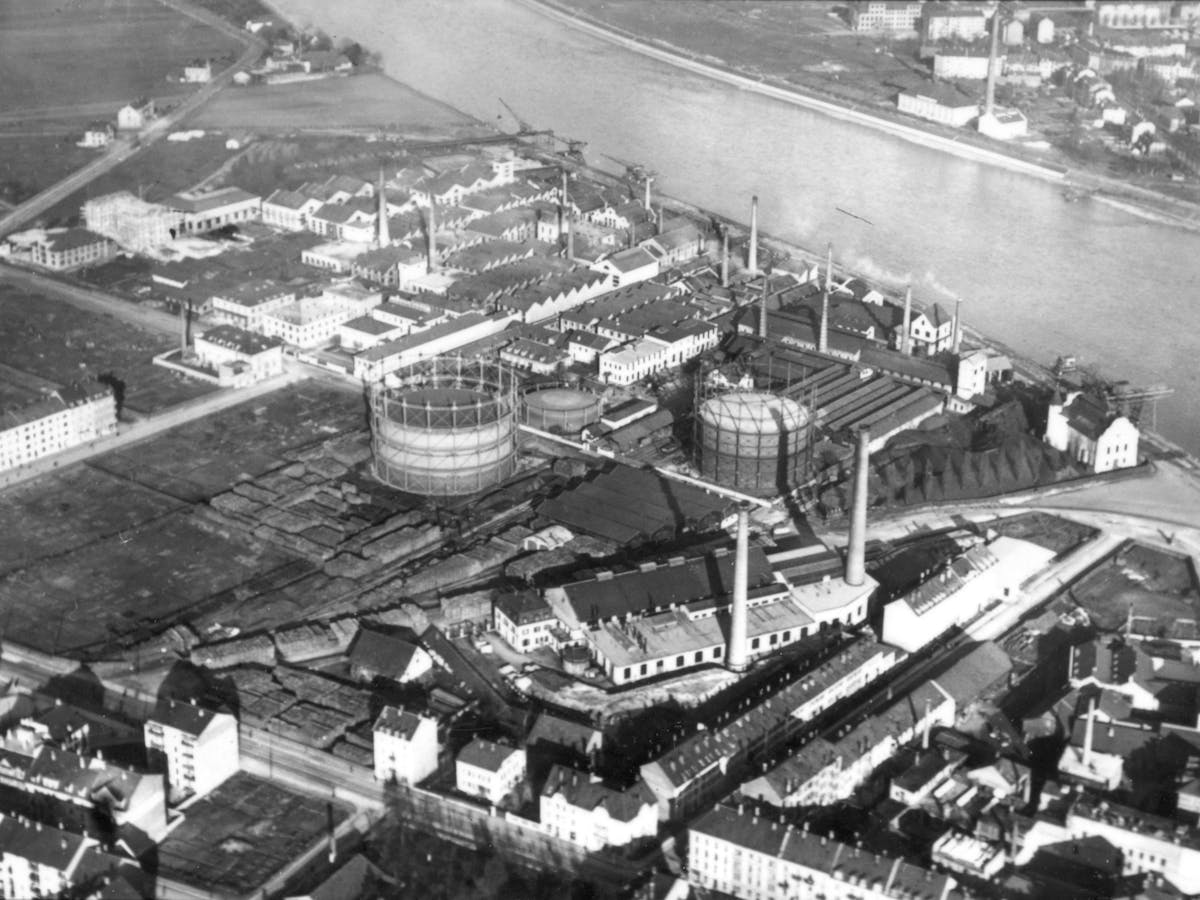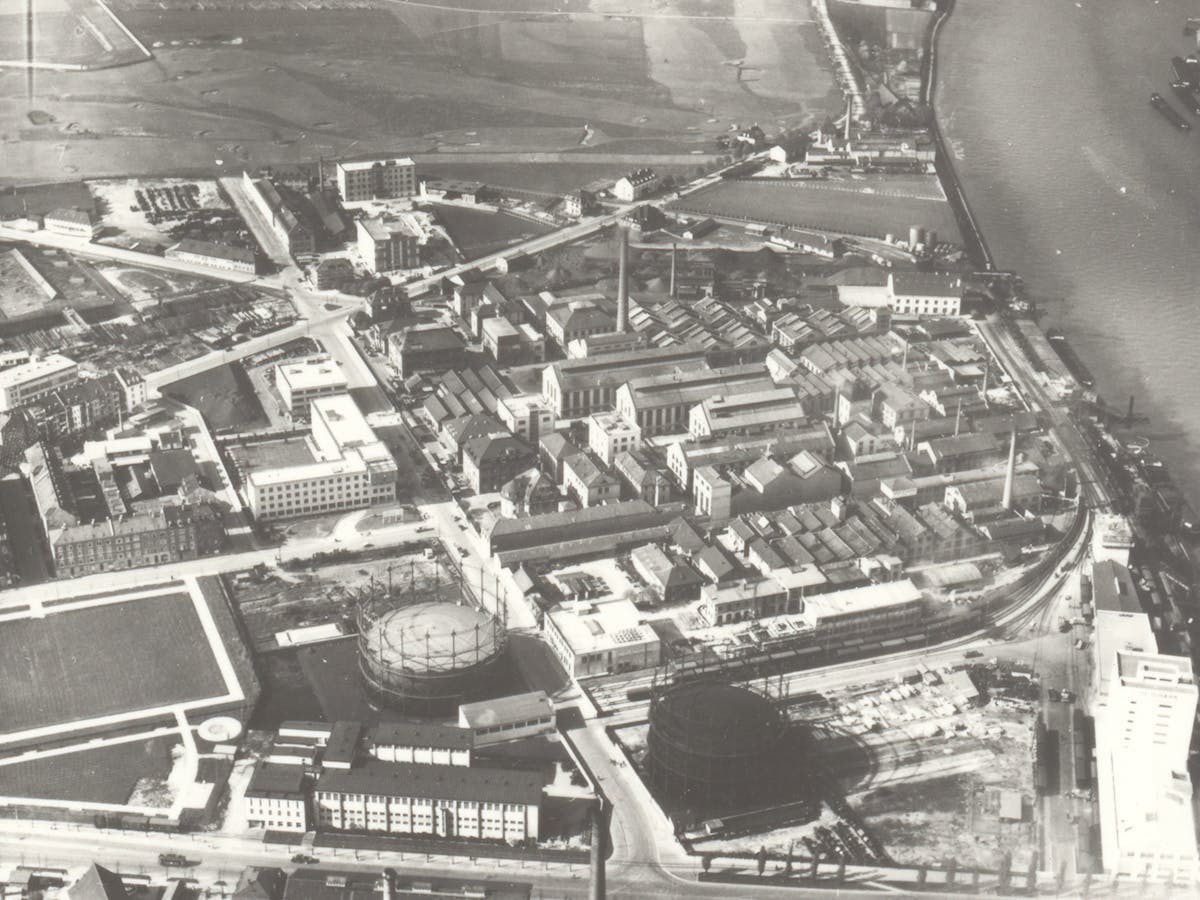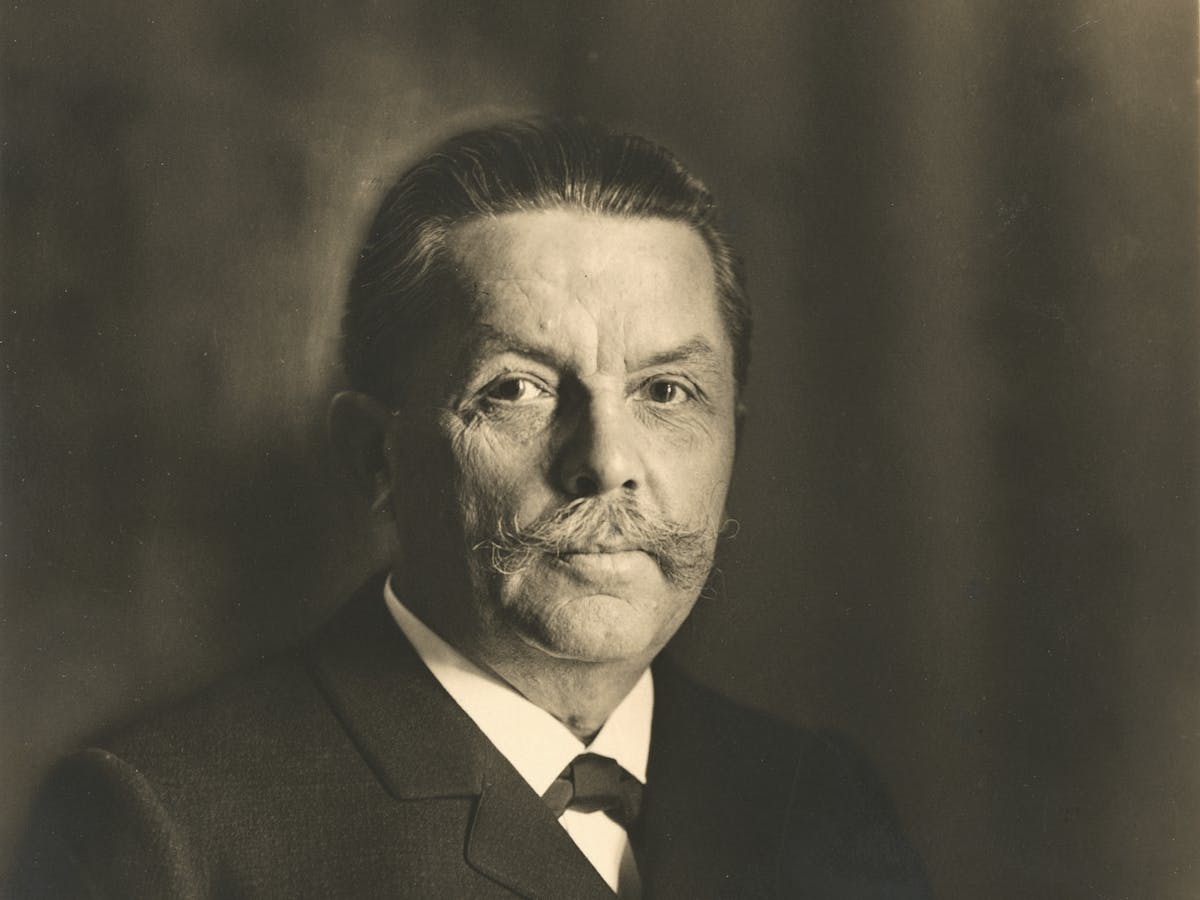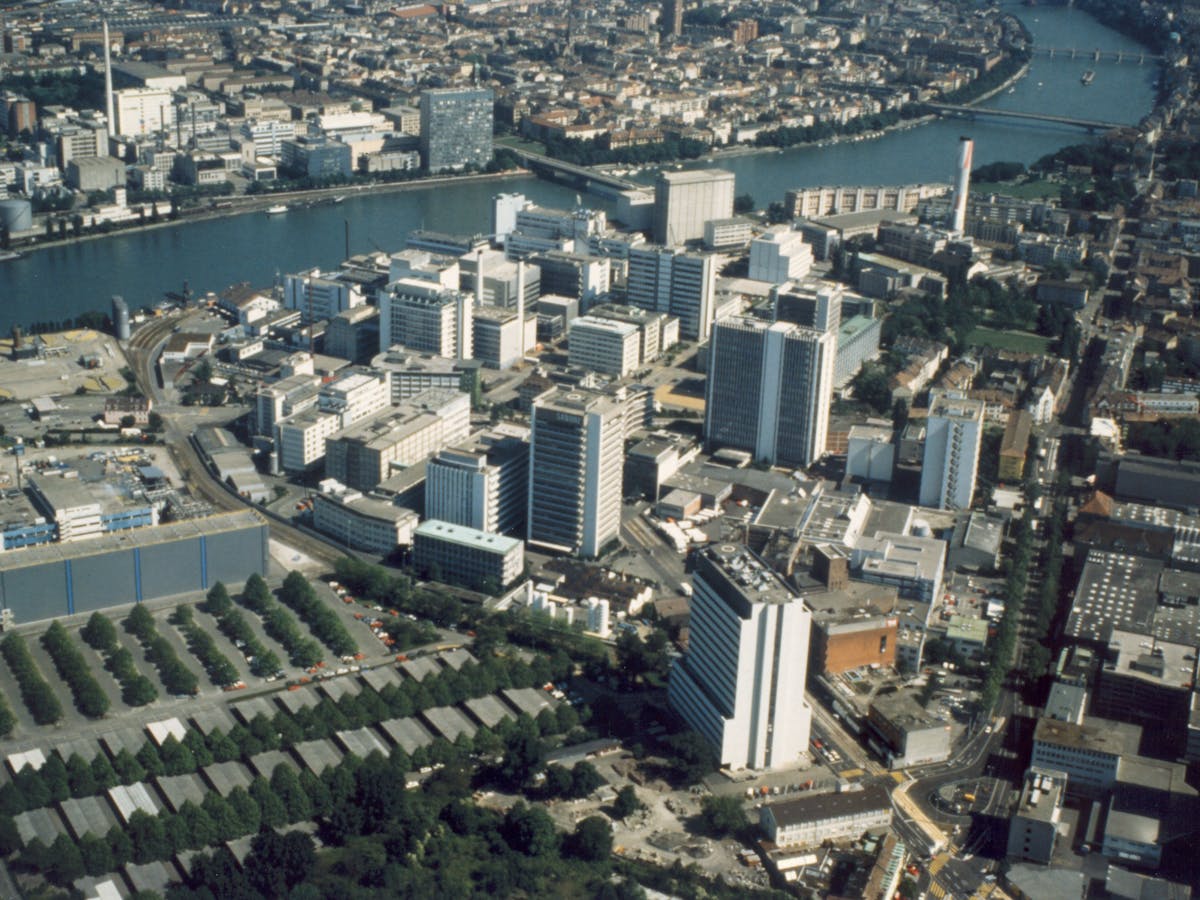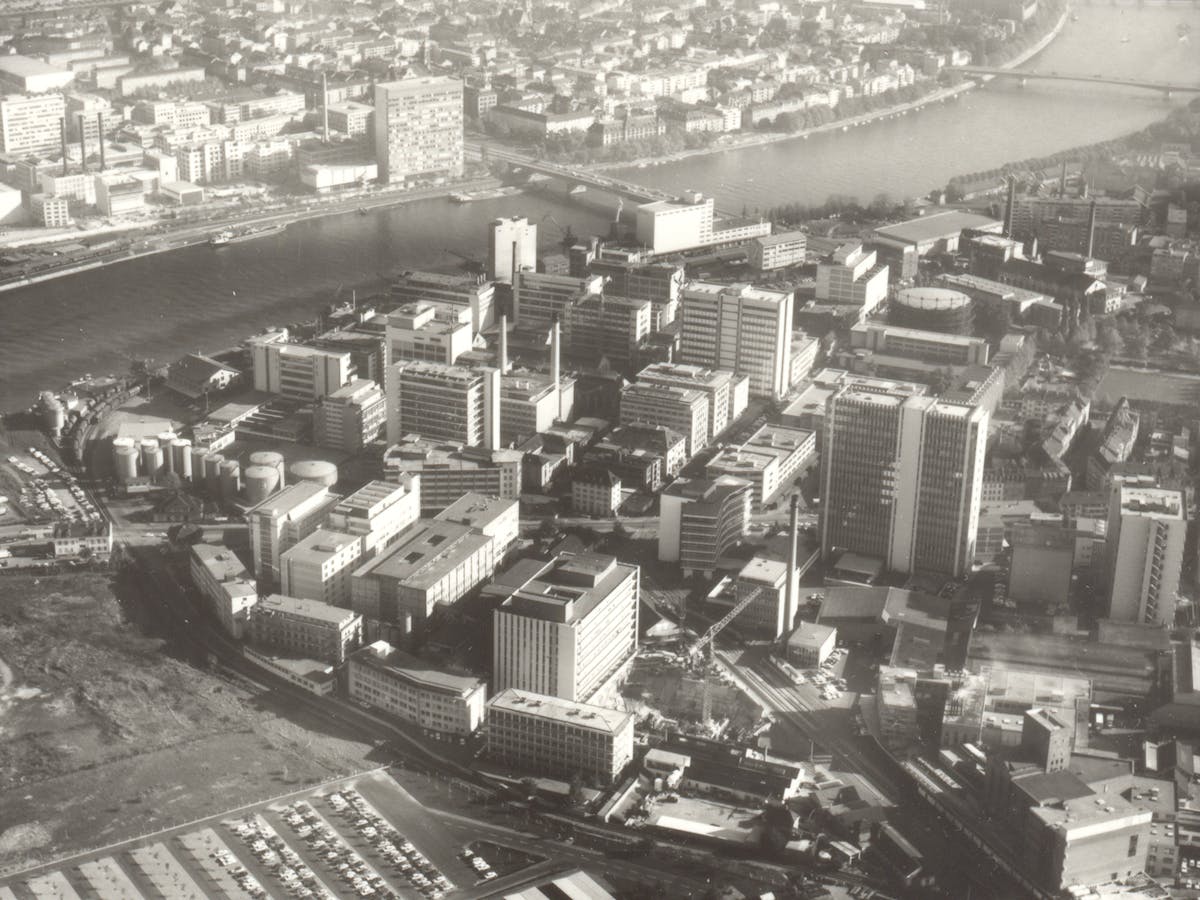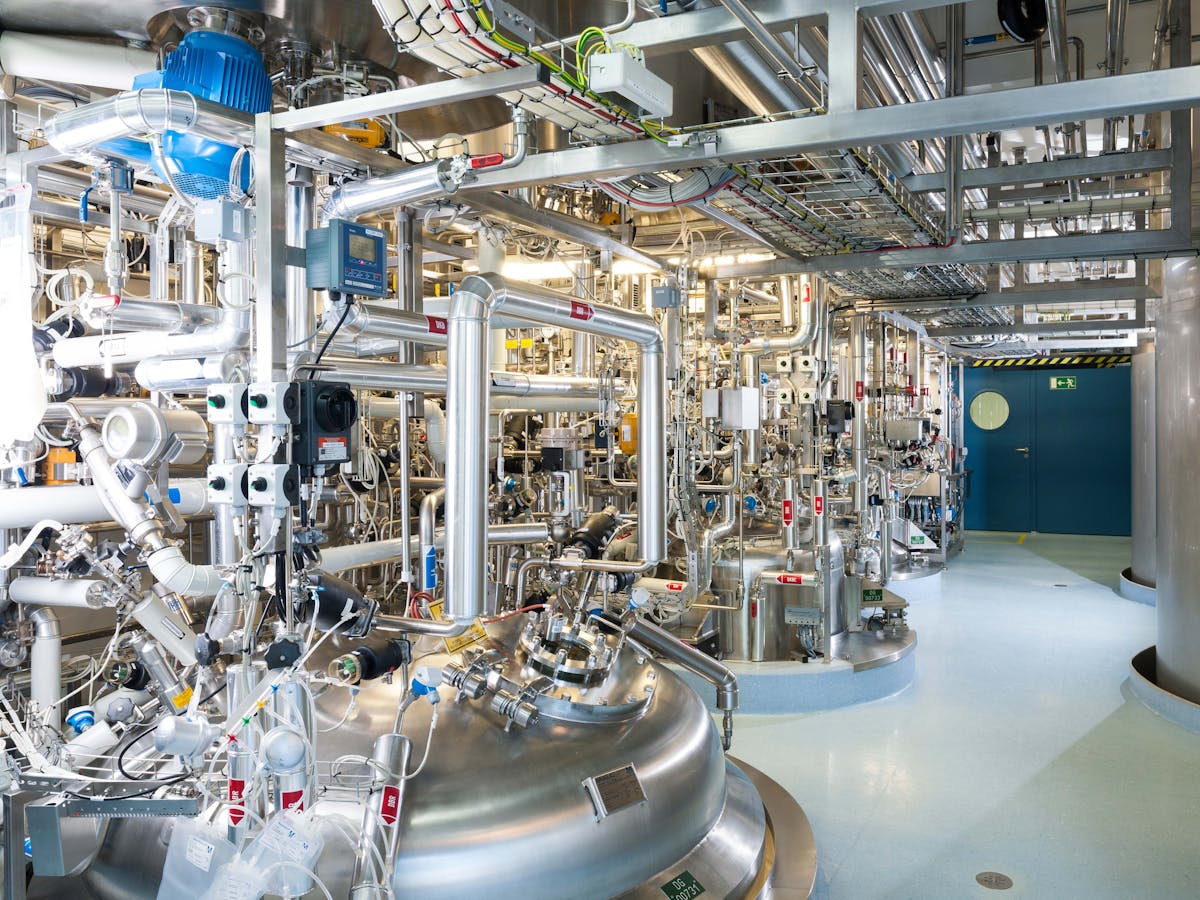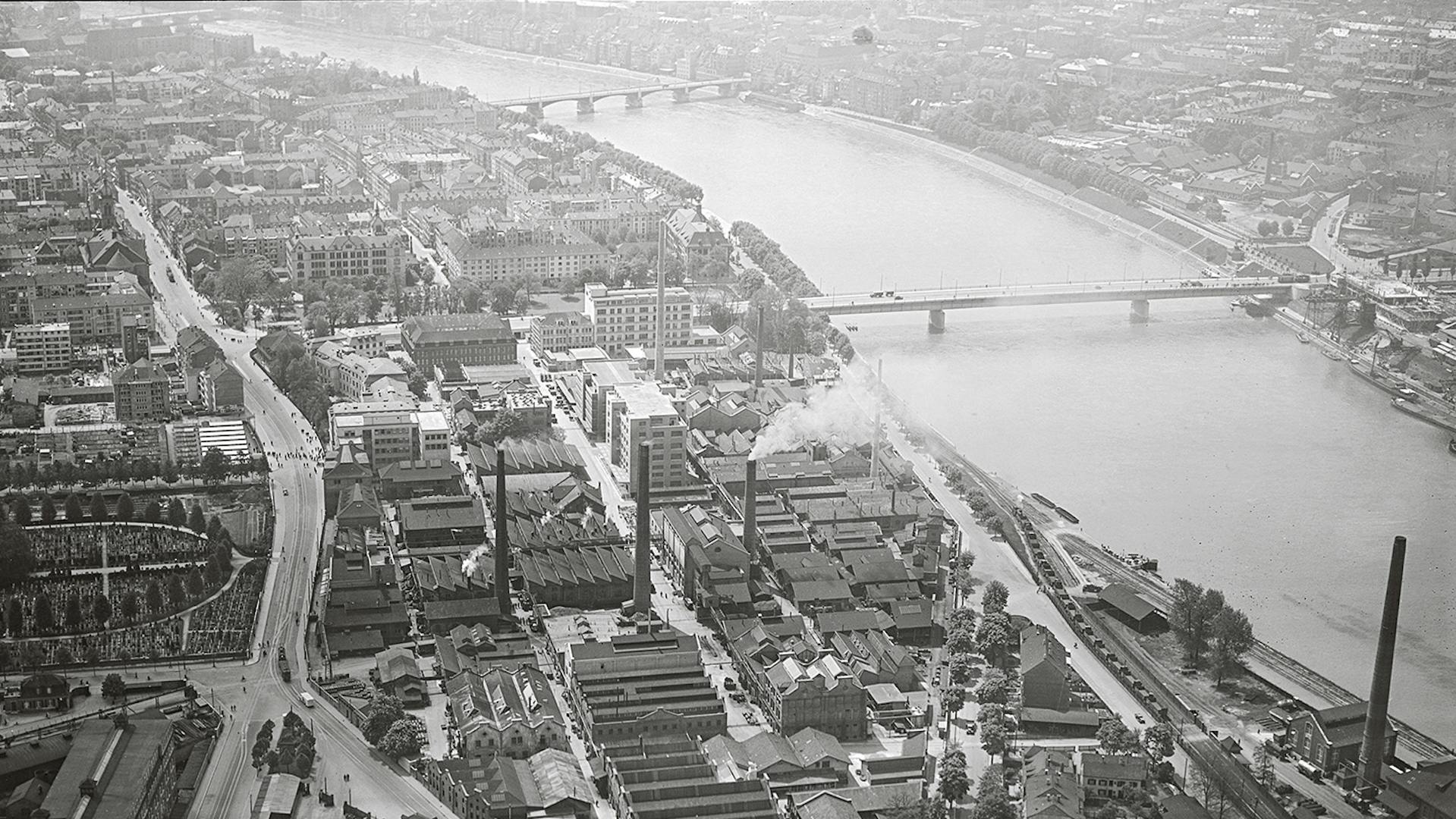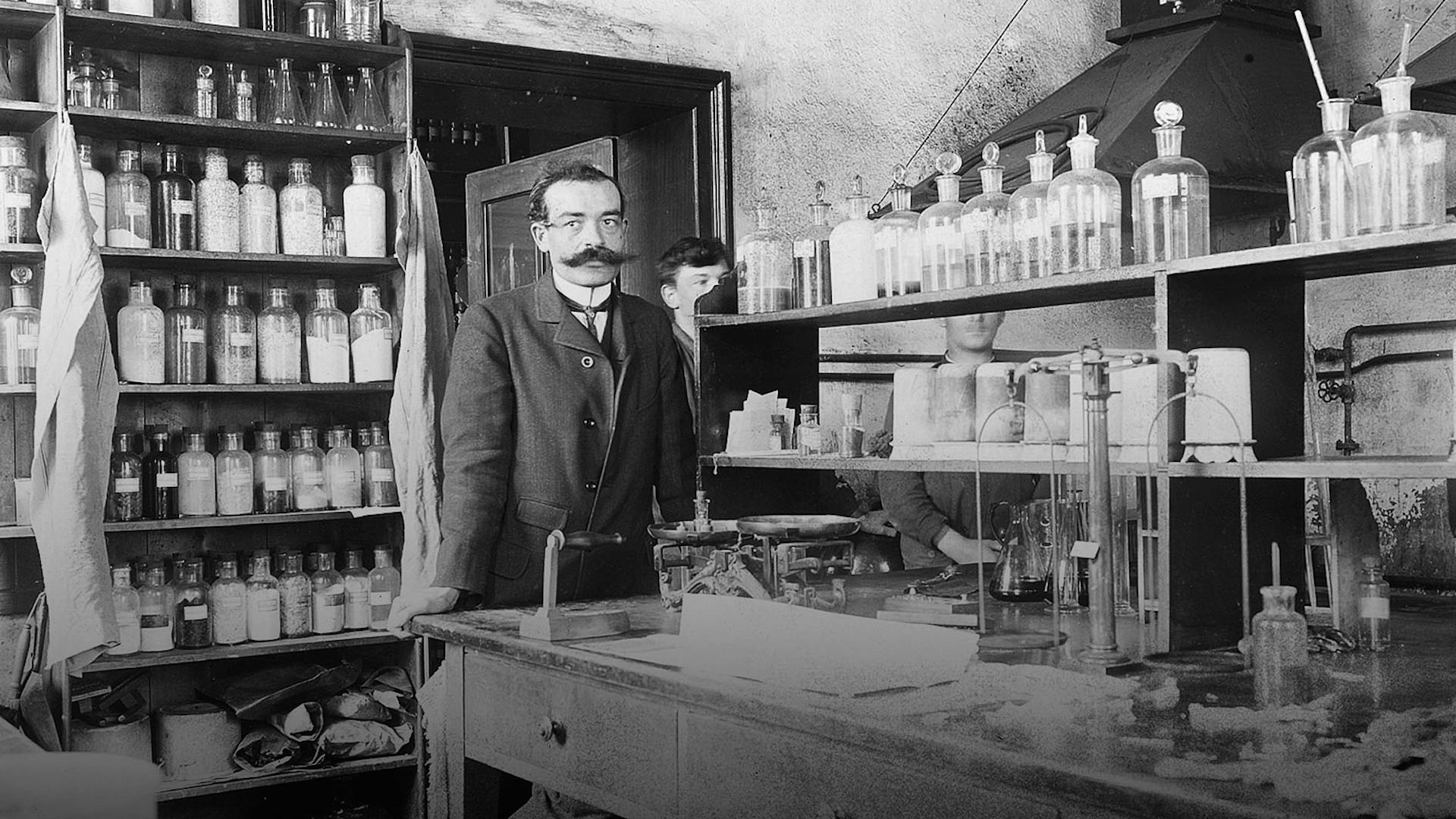
Alfred Kern
 Table of contents
Table of contents Take-off in St. Johann
Take-off in St. Johann LSD and antibiotics
LSD and antibiotics End of an era – and the start of a new one
End of an era – and the start of a new one Independent future
Independent futurePublished on 08/09/2023
At the end of the 19th century, chemist Alfred Kern and Edouard Sandoz decided to relocate their newly founded dye company – the Kern & Sandoz chemical factory – to the St. Johann quarter of Basel.
While the favorable location outside the city was a major plus, the decision to move to St. Johann was not just down to the 11 000 square meters of undeveloped greenfield where they received building approval. Above all, it was the approval of the City of Basel to dispose of the waste generated during dye production quickly and free of charge into the Rhine.
According to the report by Carl Bulacher, the cantonal chemist at the time, the company premises were “located far away from a road and will therefore not stand in the way of apartments or an expansion of the city.” He also stated that the Rhine was “the best cleaner of liquid and solid waste.”
Other companies had also taken advantage of this lax approach to waste disposal. The Gebrueder Bloch & Cie., the Durand & Huguenin chemical factory and the municipal gasworks were already located in St. Johann. On the other side of the Rhine, industrial activity had also been booming since the middle of the 19th century.
A strong start
The industrial boom had been triggered by the discovery of aniline dyes by a British chemist in 1856. First in England, then in Germany and France, artificial dyes were also being developed in Basel from coal tar.
One of the most innovative chemists was Alfred Kern, originally from the town of Buelach near Zurich, who worked for various companies until he joined forces with Edouard Sandoz in 1886. Here, he developed new dyes on his own, including Alizarin, a red dye previously extracted from rose madder that was already successfully established on the market.
The beginnings were modest. When the general partnership was founded, the company initially consisted of an office building with an attached laboratory, three production sheds and a boiler house with steam engine.
Thanks to the development of Alizarin, the Kern & Sandoz chemical factory – unlike most of the other chemical companies in Basel – was soon able to record dynamic growth. “Colossal, unprecedented, fabulous, pyramidal,” Edouard Sandoz wrote about the strong sales development three years after the company was founded.
Kern achieved great success. In a short space of time, he and his small team of less than a dozen chemists developed a range of new dyes, including a plum blue that became a success on the market. In just a few years, the company was able to develop more than 20 new dyes.
However, this early success was soon jeopardized. In 1893, Kern died of a heart condition aged just 42. Shortly afterwards, Edouard Sandoz also had to leave the company for health reasons, which later became a public limited company and operated under the name Sandoz from 1936 to 1996.
The departure of the founders ultimately turned out to be a blessing in disguise. Shortly afterwards, Sandoz was able to recruit Robert Gnehm, a leading academic and businessman. He was to play a decisive role in shaping the company’s future by focusing more on the pharmaceutical industry and bringing important talents on board.




